Feature: Knittyspin
INTRODUCTION
Knittyspin
Sampling for a Project
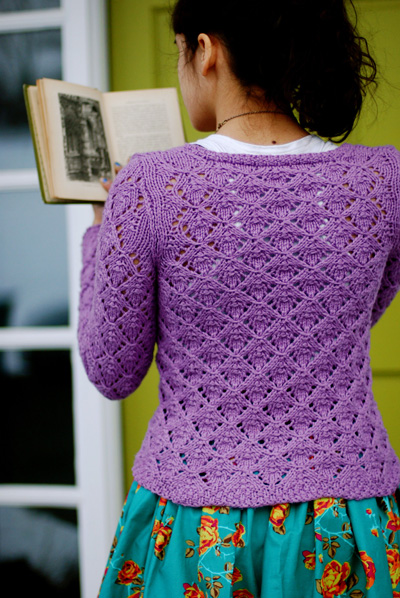
In this article I’m sampling for this sweater, Que Sera by Kirsten Kapur
In the Spring+Summer '21 issue, I walked through how I study and deconstruct a pattern and the commercial yarn it calls for. In the First Fall ‘21 issue, I talked about how to build your project yarn.
Now we’re onto doing some quick sampling for Que Sera.
I thought I knew what fiber I wanted: some beautifully dyed Shetland/silk from Into the Whirled (it's the first fiber shown here). But when I listened to my little nagging voice and knit a swatch in stockinette, I could see that it wasn’t right. Even though the dyeing seemed subtle, I knew it would detract from the lace pattern.
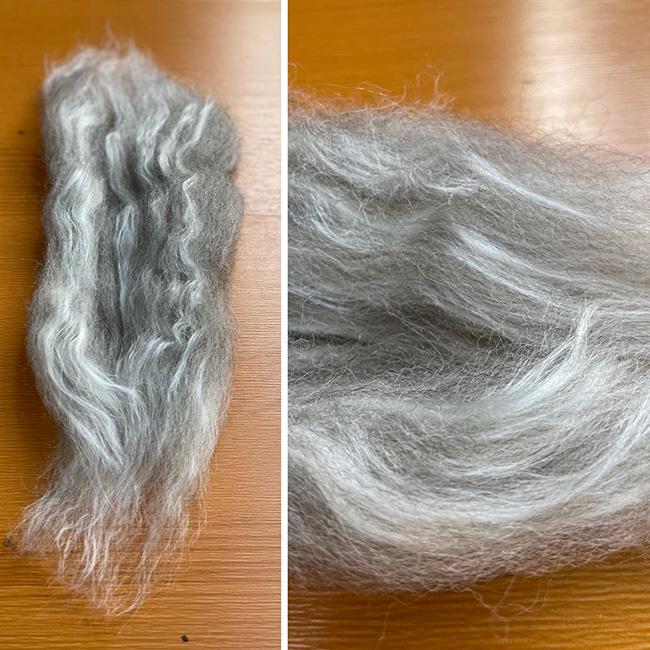
Look at the color and it has the perfect amount of silk!
I found some gorgeous Shetland/silk top. It is silky, a gorgeous natural grey, streaked with white silk and spins like a dream.
Quick Sampling
When I sample for a project, I go for the quick and dirty approach.
- Spin my default yarn from the chosen fiber.
- Figure out the path to get from my default to my project yarn.
- Spin a few really tiny samples.
- Evaluate.
- Choose one or two yarns to spin bigger samples.
- Spin enough to swatch.
- Evaluate.
How much you need to spin for tiny samples is very much up to you and how well you know your spinning. I usually can tell from a ply-back sample if I want to continue with that yarn. Tiny samples scratch an itch for me. They keep me from wondering, "if I had just tried one more different thing would that have been the perfect yarn?"
Here are two tips:
- There really is no 100% perfect yarn.
- Tiny samples are not for everyone.
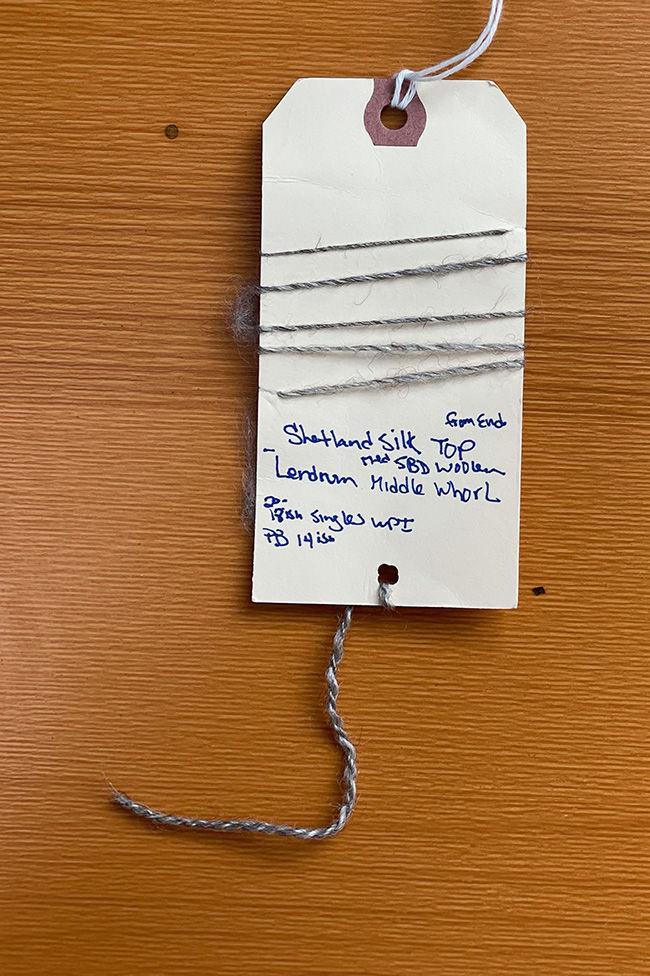
My default yarn, still woolen, still DK
I spun my default yarn on my Lendrum, made notes and kept some singles and a ply-back sample.
I spun the fiber, from the end of the top, with a woolen draft. My wpi is about 14.
The yarn I want for the sweater needs a wpi of 8-9 to match the yarn used in the project. How the yarn looks and feels is important to me. If it’s just ok, I likely won’t finish the spin. I will be auditioning different spins and preparations for the look and feel.
Changing Yarn Size from My Default Yarn
To change the size, I am going to work from my default yarn. I know I want softer stitch definition and for the sweater to be lighter, so I will keep my woolen draft.
The yarn itself needs to be bigger, so I need to spin with more fiber in each draft and with less twist. I set up my wheel as I do for my default yarn, and spin my default yarn to relax. Then I start making adjustments.
I start drafting more fiber and my yarn gets fatter, but it has too much twist since my wheel and feet are still working my default yarn. First, I change to a bigger whorl, but the twist is looser than I want.
I move back to my medium whorl and treadle just a little slower, and presto change-o, there is my new twist and new size of yarn.
Auditioning Spins
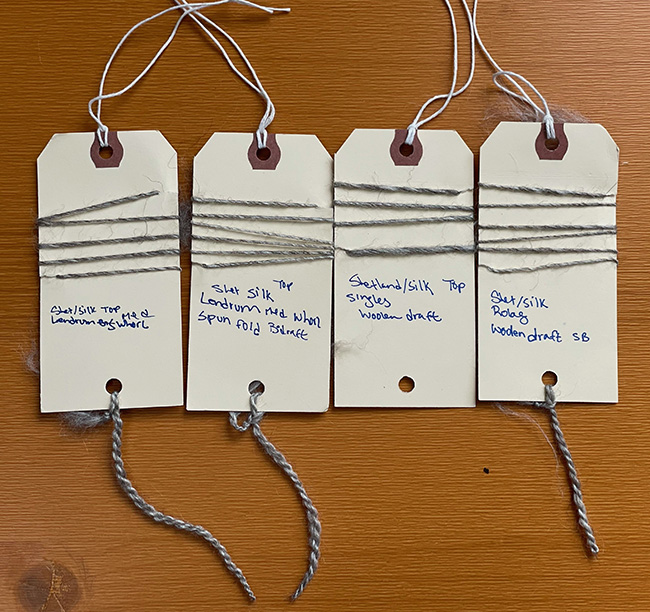
My tiny test spins, all woolen drafted. L: to r: from the end of the top, from the fold, singles, and from rolags
I was only going to audition two spins, but ended up doing four. The one I liked the most was my very last one. I spun all the yarns with a medium backward woolen draft: from the end of the top, and as singles.
I thought I would choose from those. Just feeling the singles and ply-back samples, I knew the yarn could be loftier. I was also concerned about abrasion with the singles yarn.
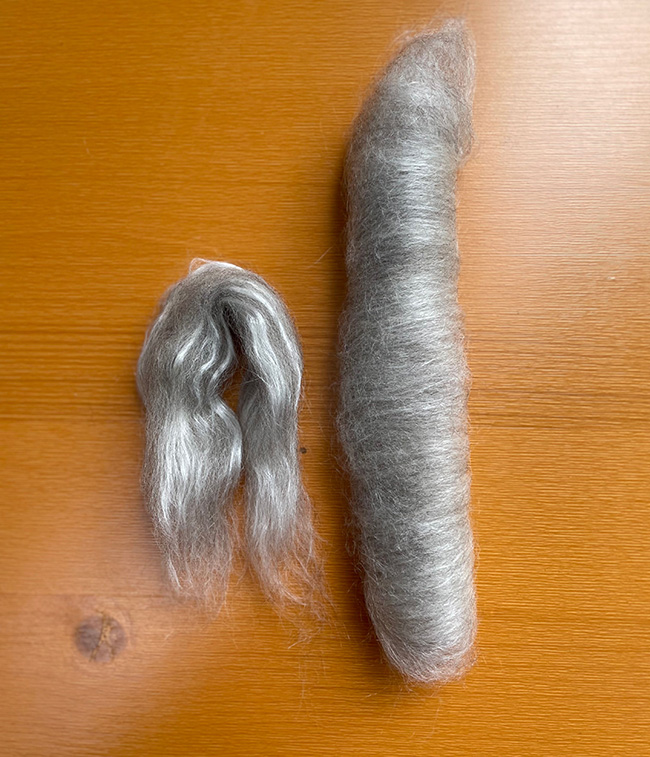
Fiber folded and carded into a rolag
I spun a woolen-drafted yarn from the fold. The extra air that got into the yarn from changing the preparation was great.
Of course, if a little extra air is good, more air must be better! I carded some rolags from the top.
I fell in love just carding the rolags. The rolags were buttery and the carding helped to distribute the silk and blend the grey a little more.
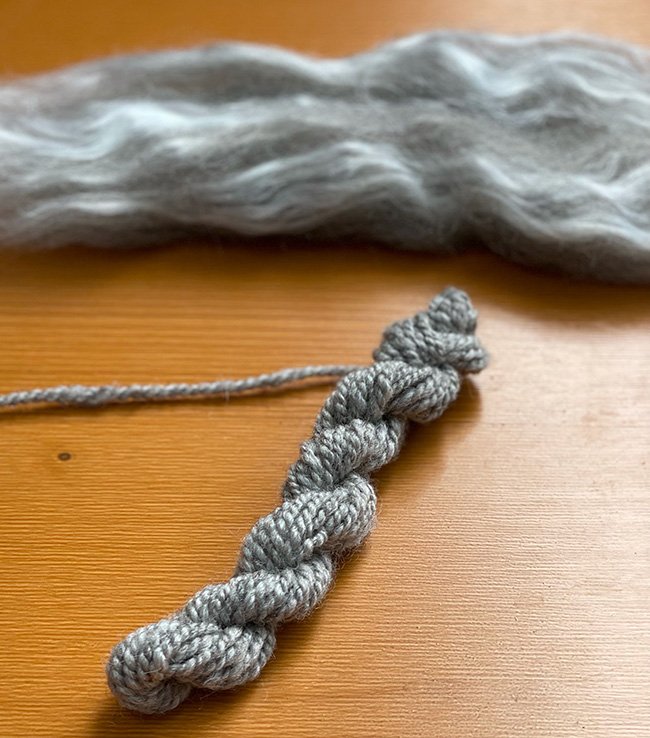
My sample skein
I spun the rolags until I got a ply-back sample I liked, then I spun enough yarn to swatch. It took me three tries to find the right needle size, but it was worth it.
I really like the swatch. The gauge is right on, and the yarn is very good. This is it!

Que Sera lace swatch
When I hit the right spin for the yarn I want, I write down everything and make a really thorough tag for the yarn, including singles and a ply-back sample.
Then I spin enough for a bigger swatch to knit in pattern. Swatches can fib. I find taking the time to knit a bigger swatch for a sweater is worth it, so I don’t spin a couple of pounds of the wrong yarn.
Not going to lie, sometimes I skip the bigger swatch and take the risk.
My measurements for this yarn:
- WPI: 8-9 wpi after finishing
- BPI: 8-9 ( I use this to monitor ply twist)
- YPP: 725- 750 (lighter than the yarn the cotton the sweater calls for which is around 688)
- Knitted gauge: 16 stitches to 4: in pattern.
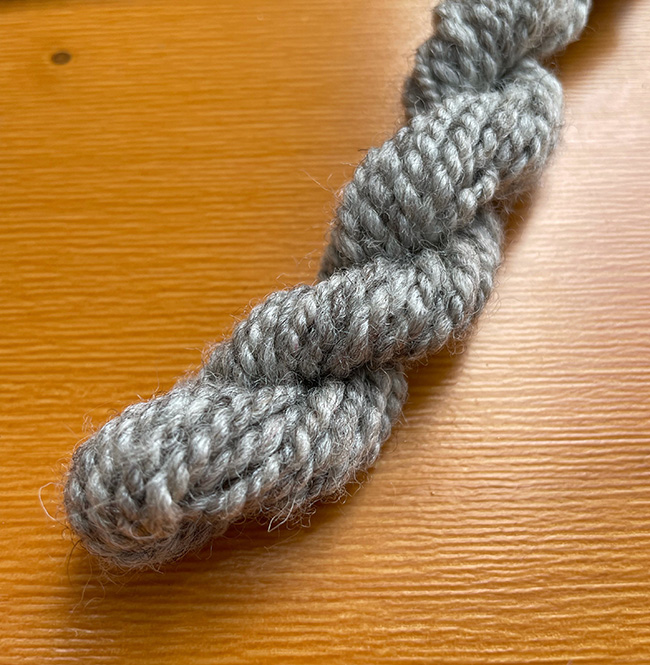
I may do another swatch spin. I think I can get it lighter…
I need 1.7 pounds of fiber to spin this exact yarn for my Que Sera sweater. Of course, I will buy extra just in case.
In the next issue I will give you some tips for getting through a big spin.







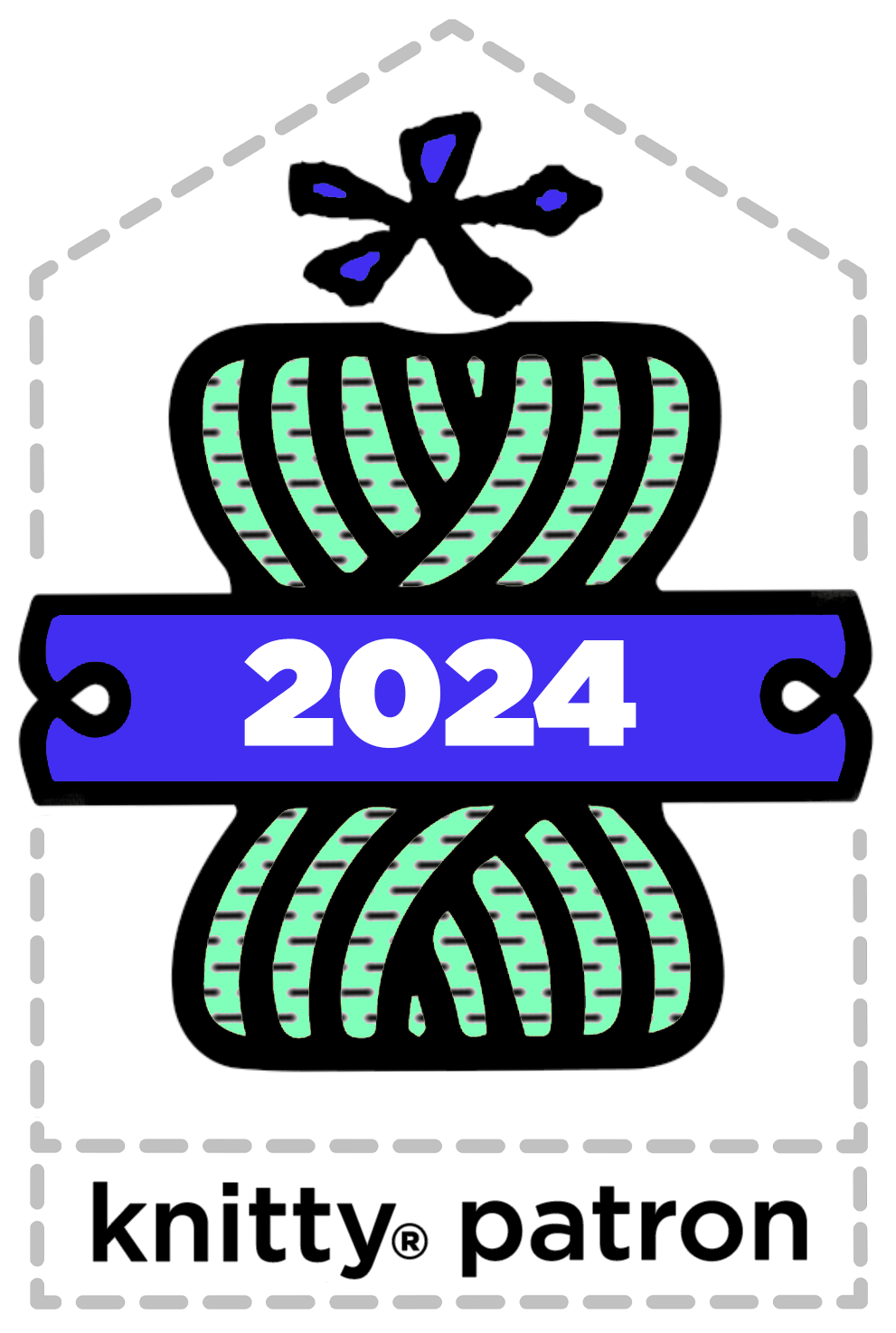
 Jillian Moreno is the editor of Knittyspin and Catalyst for Knitty. She's the Developmental Editor for PLY Magazine and PLY Books. A couple years ago, she wrote the best-selling spinning book
Jillian Moreno is the editor of Knittyspin and Catalyst for Knitty. She's the Developmental Editor for PLY Magazine and PLY Books. A couple years ago, she wrote the best-selling spinning book